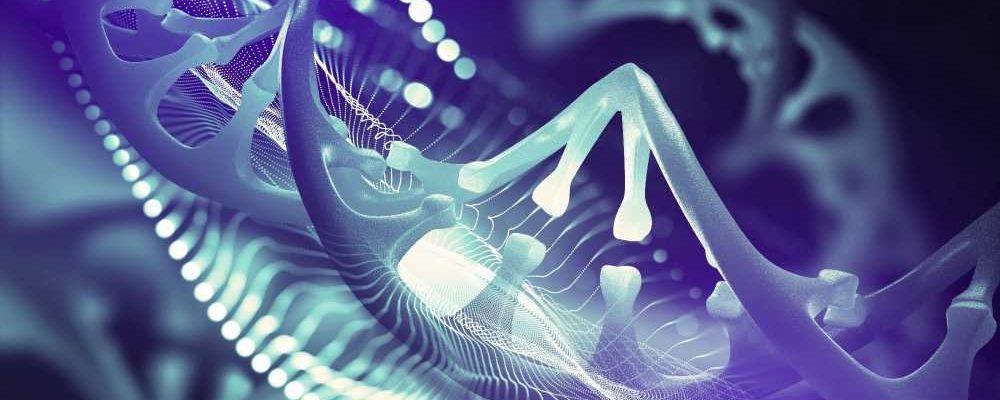Single-cell screening of cerebral organoids to identify developmental defects in autism
In a recent study published in Nature, researchers develop the clustered regularly interspaced short palindromic repeats (CRISPR)-human organoids-single-cell ribonucleic acid (RNA) sequencing (CHOOSE) system to identify developmental brain defects in autism.
 Study: Single-cell brain organoid screening identifies developmental defects in autism. Image Credit: Yurchanka Siarhei / Shutterstock.com
Study: Single-cell brain organoid screening identifies developmental defects in autism. Image Credit: Yurchanka Siarhei / Shutterstock.com
Diagnosing autism
Autism spectrum disorder (ASD) is a neurodevelopmental illness defined by disturbances in the developmental processes of the human brain, which is impacted by genetic and molecular programming. Due to the intricacy of brain development, the diagnosis of autism can be delayed.
Despite the difficulties of single-cell perturbation screening, understanding the genetic etiology of neurodevelopmental disorders (NDDs) needs access to the human brain's developmental processes.
About the study
In the present study, researchers describe the CHOOSE system, which incorporates parallel inherited changes in single-cell transcriptomic display within mosaic brain organoids to identify dysfunctional traits for high-risk autism spectrum disorders genes throughout different kinds of cells in early brain developmental stages in cerebral organoids.
For pooled loss-of-function screening in mosaic organoids, the CHOOSE method employs guide RNA molecules, inducible clustered regularly interspaced short palindromic repeats, CRISPR-associated protein 9 (Cas9) protein-based genomic disruption, and single-cellular transcriptomic analyses.
Barcoded guide RNA (gRNA) pairs were supplied to stem cells as pooled lentiviral libraries. Telencephalic organoids were produced to detect the dysfunctional characteristics of 36 genes associated with increased risk of ASD at the cell type and molecular pathway levels.
A cerebral organoid genetic regulatory network (GRN) was built to discover the autism-enriched regulatory hubs linked to genes that were dysfunctional due to genetic perturbations. Single-cell CRISPR screening was performed in barcoded organoids.
Using Simons Foundation Autism Research Initiative (SFARI) gene scores, the researchers investigated loss-of-function symptoms for 36 transcriptional regulatory genes with high ASD causal probability.
A label transfer was used to generate cell-type labels for the complete CHOOSE dataset. Cell proliferation and depletion phenotypes were examined and cell-type-specific effects of ASD gene perturbations were analyzed using the Cochran-Mantel-Haenszel (CMH) test stratified by library replicates. To further examine the molecular alterations generated by each disruption, a differential gene expression study was conducted.
Fluorescence-activated cell sorting (FACS) and immunohistochemistry (IHC) studies were also performed. ASD-associated regulatory modules and documented gene expression variations in both dorsal and ventral telencephalon were determined for each genetic disruption.
ASD-associated transcription factor (TF) modules throughout cortical development, as well as important regulatory hubs that underpin the observed gene expression alterations, were also identified.
All experiments were performed using human embryonic stem cells (hES) expressing eCas9. Flow cytometry-based guide RNA tests were used to measure the editing efficiencies of single-guide RNA (sgRNA) pairs.
Two patients with heterozygous AT-rich interactive domain-containing protein 1B (ARID1B) mutations were recruited to confirm the findings' relevance to human illnesses. Fetal brain structures were studied using magnetic resonance imaging (MRI).
Study findings
The study intended to determine the impact of ASD on organoids, with a particular emphasis on the disruption of 36 genes associated with an increased risk of autism spectrum disorders. Mosaic embryoid bodies were generated using a pooled, high-complexity barcoding screening technology, which was then utilized to construct mosaic embryoid bodies.
The BRG1/BRM-associated factor (BAF) component mutation in the ARID1B gene influenced progenitor transition to interneuron precursor-type cells and oligodendrocytes, which was validated in patient-induced and pluripotent stem cell-obtained brain organoids. The CHOOSE system was utilized for investigating the impact of many ASD genes on the fate of cells.
The results confirmed enrichment and depletion phenotypes in individually perturbed organoids for four genes including Lysine N-methyltransferase 2C (KMT2C), LEO1 Homolog, Paf1/RNA Polymerase II Complex Component (LEO1), activity-dependent neuroprotector protein (ADNP), and WW domain-containing adapter protein (WAC).
Cells in the CHOOSE screen originated from a variety of tiny clones, which is critical for minimizing dominating clonal effects. Pathology associated with ASD may appear as early as the neural progenitor stage.
Cell attachment, cell differentiation, forebrain growth, and axogenesis were among the most related biological processes after ASD gene disruption. The investigation of uniform manifold approximation and projection (UMAP) identified separate TF groups that are active in brain progenitor cells, inhibitory neurons, and excitatory neurons. The concentration of oligodendrocyte transcription factor 1 (OLIG1) and eomesodermin (EOMES) in response to ASD genetic alterations suggest potentially susceptible cell fate specification-related regulatory networks.
A separate development pathway from ventral progenitor cells to early oligodendrocyte precursor cells (OPCs) was discovered, as well as branched interneuron precursor cells (INPs) into diverse inhibitory neurons. ARID1B-deficient cells were concentrated in the oligodendrocyte precursor cell trajectory with numerous OLIG2+ ventral radial glial cells (v-RGCs). ARID1B-affected v-RGCs exhibited greater odds of transitioning to early oligodendrocyte precursor cells compared to the neuronal fates.
Conclusions
The study findings emphasize the importance of understanding the impact of ASD on organoids and the possible function of these genes in cell destiny determination. The CHOOSE system, which provides a developmental and cell type-specific database for gene loss-of-function studies, was used to examine ASD in organoids.
These observations demonstrate that IPCs are more susceptible to ASD genetic alterations, with L2/3 excitatory neurons being especially vulnerable. The OLIG1 module, which is necessary for oligodendrocyte development, is also implicated in the pathophysiology of ASD.
- Li, C., Fleck, J. S., Martins-Costa, C., et al. (2023). Single-cell brain organoid screening identifies developmental defects in autism. Nature. doi:10.1038/s41586-023-06473-y. nature.com/articles/s41586-023-06473-y
Posted in: Genomics | Device / Technology News | Medical Science News | Medical Research News | Medical Condition News
Tags: Autism, Brain, Cas9, Cell, Cell Proliferation, Cell Sorting, CRISPR, Cytometry, Embryoid, Embryonic Stem Cells, Flow Cytometry, Fluorescence, Gene, Gene Expression, Genes, Genetic, Genomic, IHC, Imaging, Immunohistochemistry, Lysine, Magnetic Resonance Imaging, Mutation, Neurons, Organoids, Palindromic Repeats, Pathology, Pathophysiology, Polymerase, Progenitor Cells, Proliferation, Protein, Research, Ribonucleic Acid, RNA, Stem Cells, Technology, Transcription

Written by
Pooja Toshniwal Paharia
Dr. based clinical-radiological diagnosis and management of oral lesions and conditions and associated maxillofacial disorders.
